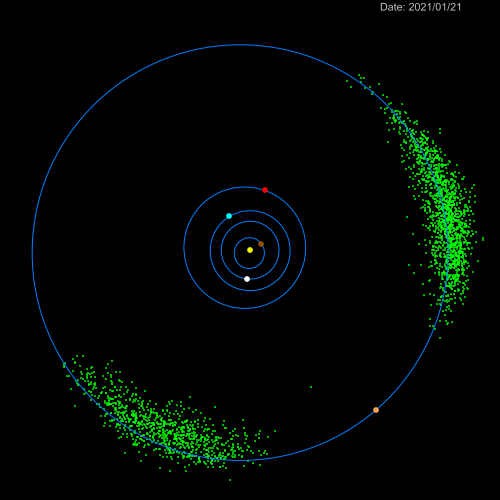A Historic Journey: NASA's Lucy Spacecraft to the Trojan Asteroids
Written on
Chapter 1: Introduction to the Lucy Mission
The Lucy spacecraft, marking a milestone in space exploration, has been meticulously prepared for its groundbreaking launch to the Trojan asteroids of Jupiter.

On July 30, a C-17 cargo plane from the Air Force landed at NASA's Kennedy Space Center in Florida. A large shipping container was carefully unloaded, revealing its valuable contents in an Astrotech cleanroom, where it was thoroughly inspected and approved.
The Lucy spacecraft has successfully arrived at the space center, gearing up for its momentous mission. Created by the Southwest Research Institute, it is the first spacecraft to target the Trojan asteroids that accompany Jupiter in its solar orbit.
Assuming everything proceeds as planned, an Atlas V 401 rocket is scheduled to launch the Lucy spacecraft into orbit between October 16 and November 8.
Join us on Astronomy News with The Cosmic Companion on September 14 as we converse with Dr. Cathy Olkin, Deputy Principal Investigator for the Lucy Mission.

Interestingly, the spacecraft is named after Lucy, a significant early hominid discovered in Ethiopia in 1974. This hominid was named in tribute to the Beatles' song "Lucy in the Sky with Diamonds." Just as the original Lucy provided critical insights into human evolution, the spacecraft aims to unlock secrets of our solar system's history.
“During its twelve-year primary mission, Lucy will investigate an unprecedented number of asteroids, including one main belt asteroid and seven Trojan asteroids, utilizing three Earth-gravity assists to reach the Trojan clusters and achieve these specific encounters,” explains NASA.
Section 1.1: Understanding the Trojan Asteroids
The Trojan asteroids of Jupiter exist in two clusters, orbiting just ahead of and just behind the planet. Researchers believe these accompanying asteroids contain some of the oldest materials from the solar system's formation. Analyzing these celestial companions may provide valuable insights into the early solar system.

“The spacecraft will approach the first of its eight targets, a main belt asteroid, in 2025. Lucy will reach its first Trojan asteroid in 2027 and will complete its final encounter with a binary pair in 2033. This mission includes three gravity assists from Earth, enabling these remarkable, record-setting flybys,” Dr. Cathy Olkin stated.
Chapter 2: The Lucy Spacecraft's Specifications
The Lucy spacecraft spans 46 feet in width and is equipped with two large solar panels, each nearly seven meters (24 feet) across. These substantial panels will enable Lucy to harness solar energy while operating in the orbit of Jupiter, a feat never before achieved.
“The spacecraft is currently undergoing its final series of tests and pre-launch assessments, which encompass software checks, instrument evaluations, powered function tests, propulsion propellant loading, and telecommunications system examinations, in addition to self-diagnostic tests,” reported SwRI.
The Lucy mission is poised to deliver a wealth of information for astronomers eager to comprehend the intricacies of our solar system.
The Lucy mission not only represents a significant advancement in our understanding of the solar system but also serves as an exciting chapter in the ongoing exploration of space.
James Maynard, the founder and publisher of The Cosmic Companion, resides in Tucson, Arizona, with his wife, Nicole, and their cat, Max.
If you enjoyed this article, consider joining us on The Cosmic Companion Network for our podcast, weekly video series, informative newsletter, and news updates on Amazon Alexa!